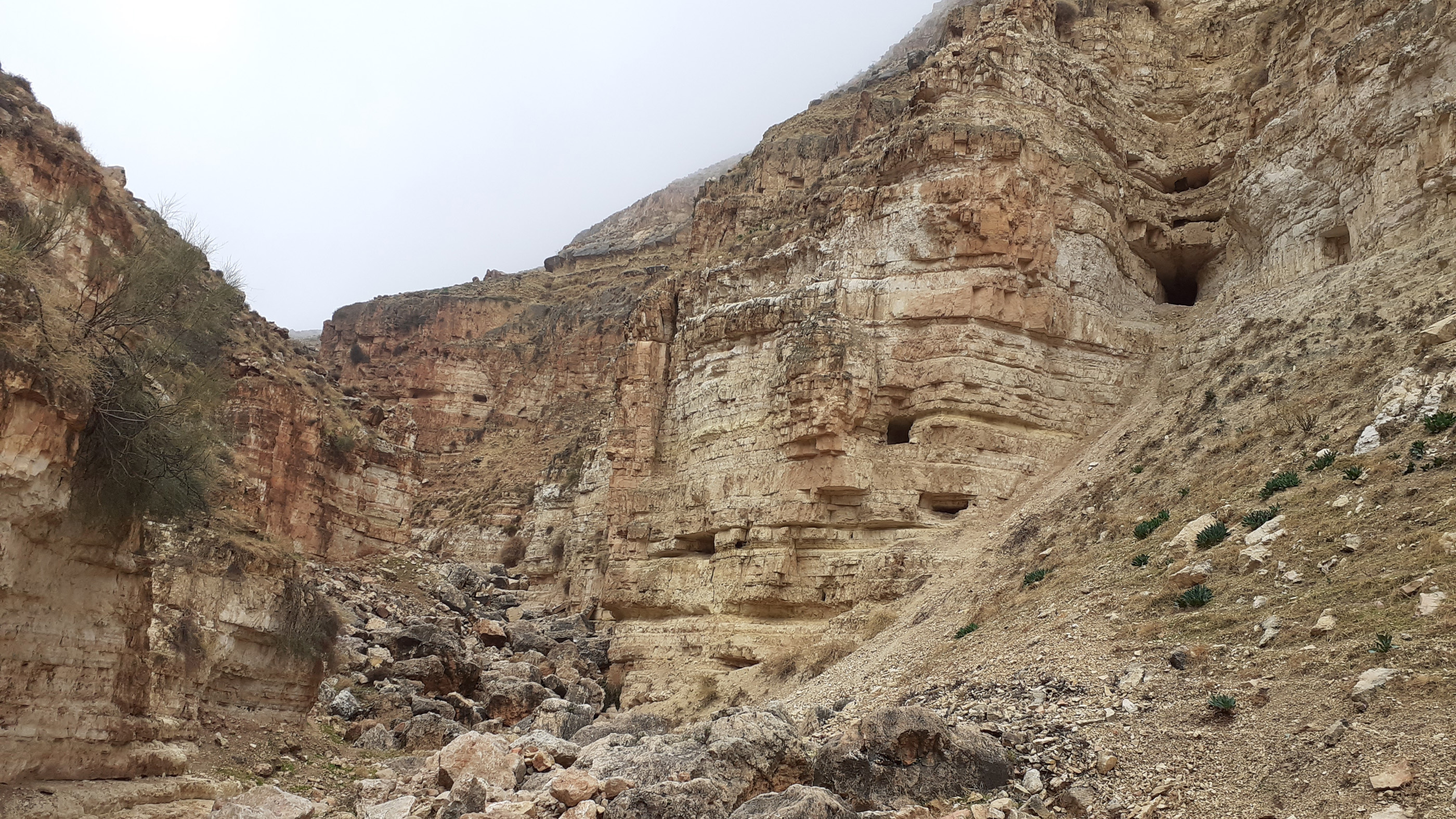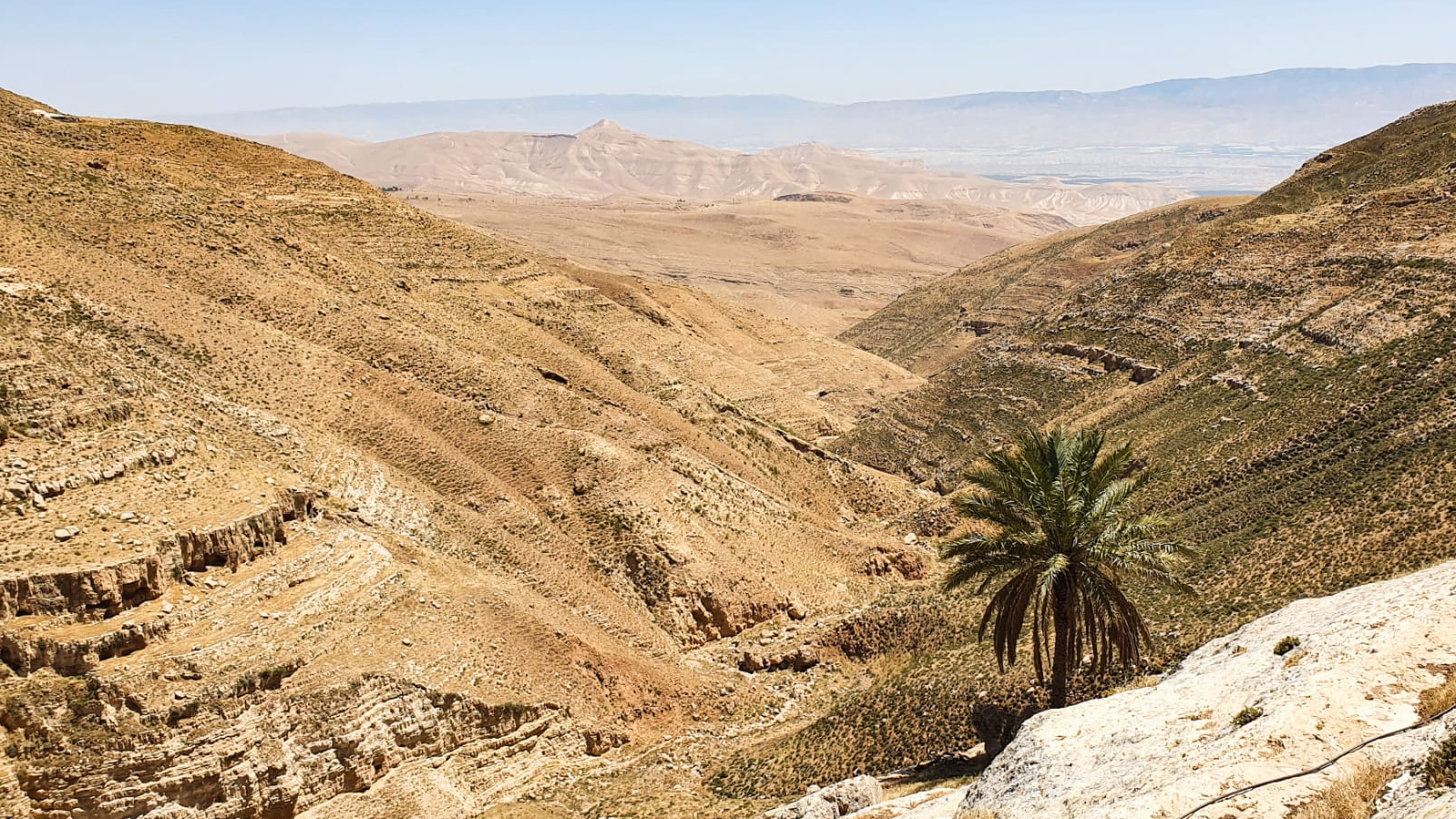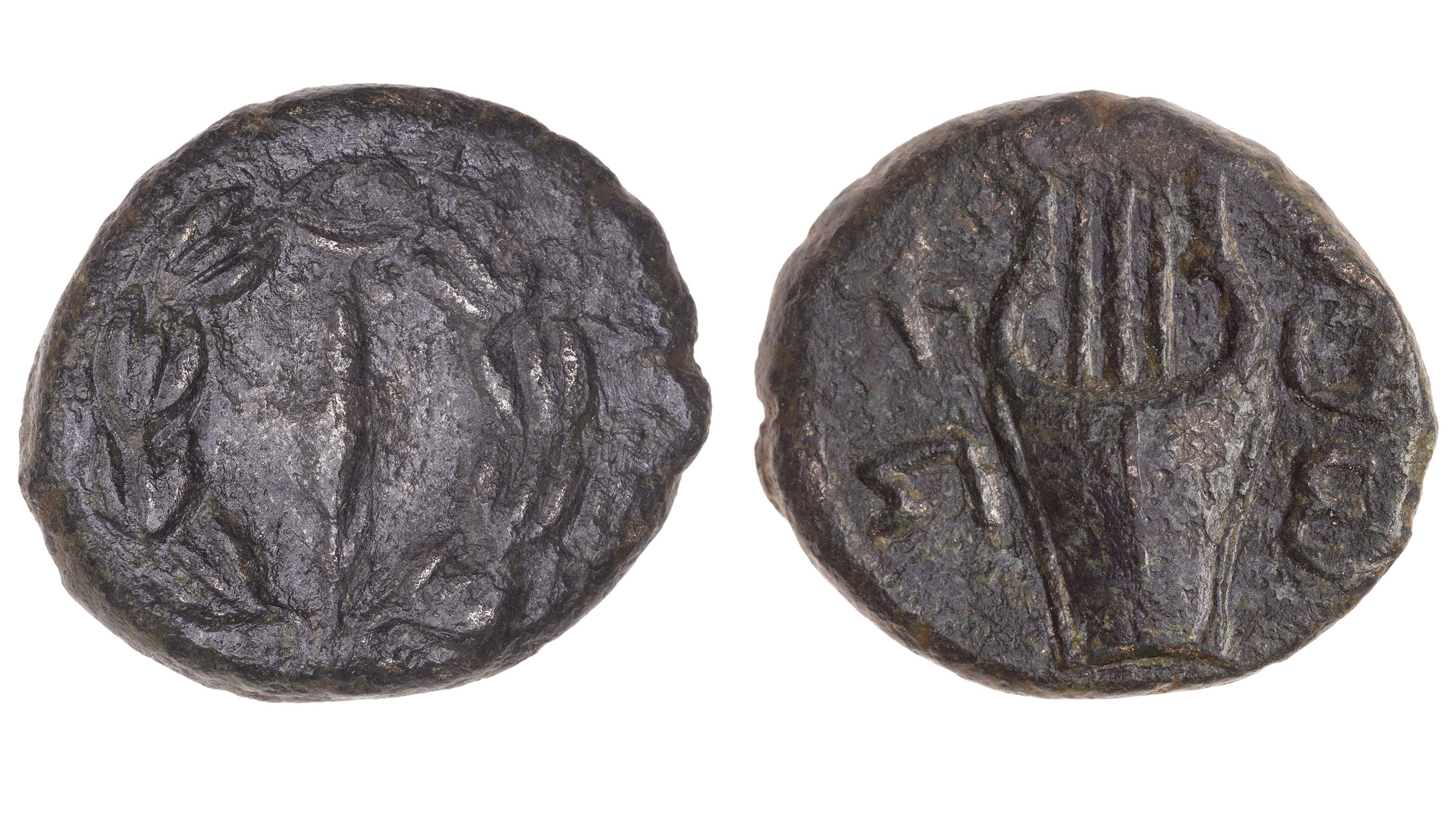'Freedom of Zion' coins dating to famous Jewish revolt found in the West Bank

Two coins minted about 70 years apart by Jewish rebels during two separate revolts against the Roman Empire have been discovered in the West Bank.
The coins may offer insight to what happened during the Bar Kochba revolt against the Romans, researchers say.
One of the coins, minted in A.D. 67-68, depicts a vine leaf and a Hebrew inscription that translates to "the freedom of Zion" on one side, while the other side shows an amphora with two handles and a Hebrew inscription that translates to "year 2," said Dvir Raviv, a senior lecturer at Bar-Ilan University in Israel, who led an archaeological survey in 2020 that uncovered the coins about 19 miles (30 kilometers) northeast of Jerusalem.
Related: Photos: 2,000-year-old Roman road and coins discovered in Israel
At the time this coin was minted, Jewish rebels had defeated Roman forces in the region and had taken over a sizable section of Israel, including Jerusalem, forming a short-lived government that minted its own coins. In A.D. 70, a Roman counterattack would result in the Romans taking back Jerusalem and destroying most of the Temple Mount, the most holy place in Jerusalem.
The archaeological survey also uncovered the other coin less than a mile (1 km) away from the first in a small cave that appears to have been looted in recent times, Raviv said. It was minted in A.D. 134-135, during the so-called Bar Kochba rebellion, which lasted from 132 to 136. One side has a Hebrew inscription that translates to "for the freedom of Jerusalem," along with a palm branch inside a wreath; the other side of the coin is decorated with an image of a lyre and a Hebrew inscription that translates to "Shimon," which was the name of rebel leader "Shimon Ben Kosva, or Bar-Kochba.
At the time that coin was minted, Jewish rebels had launched another rebellion against the Roman Empire, also taking over a good chunk of Israel and forming another short-lived government that minted its own coins. The Romans crushed this rebellion in A.D. 136, with the ancient Roman historian Cassius Dio (who lived decades later, from about 155 to 235) claiming that over 500,000 Jewish men were killed.
Get the world’s most fascinating discoveries delivered straight to your inbox.
"Symbols and slogans on Jewish coins during the two Roman wars declared the rebels' goals: political freedom, the liberation of Jerusalem from the Roman conqueror and the renewal of worship in the Temple," the researchers said in a statement.




Clues to a revolt
The coins may provide clues to the revolts, if only because archaeologists know exactly where they were found. Most coins dating to the revolts were found by looters and emerged on the antiquities market, meaning that archaeologists don't know where they originated, wrote Raviv in an article set to be published in December in the journal Israel Numismatic Research.
For instance, the fact that archaeologists know that these coins were found just 1 km (0.62 miles) apart means that theoretically the same person may have owned both coins, Raviv told Live Science.
The coins were found in the Acrabatta region, which was the northernmost region of Judea at the time of Roman rule, Raviv said. Until recently, no coins from the revolt led by Bar-Kochba had been found in this area.
"The Bar-Kokhba coin from Wadi er-Rashash indicates the presence of a Jewish population in the region up to [A.D.] 134/5, in contrast to a previous claim that Jewish settlement in the highlands north of Jerusalem was destroyed during the Great Revolt [that ended in A.D. 73] and not inhabited afterwards," Raviv said in the statement. "This coin is also the first evidence that the Acrabatta region, the northernmost of the districts of Judea during the Roman period, was controlled by the Bar-Kochba administration," Raviv said.
In addition to finding the coins, archaeologists surveying the area also discovered the remains of ceramics, glass items and iron artifacts, including two Roman knives.
Originally published on Live Science.

Owen Jarus is a regular contributor to Live Science who writes about archaeology and humans' past. He has also written for The Independent (UK), The Canadian Press (CP) and The Associated Press (AP), among others. Owen has a bachelor of arts degree from the University of Toronto and a journalism degree from Ryerson University.


